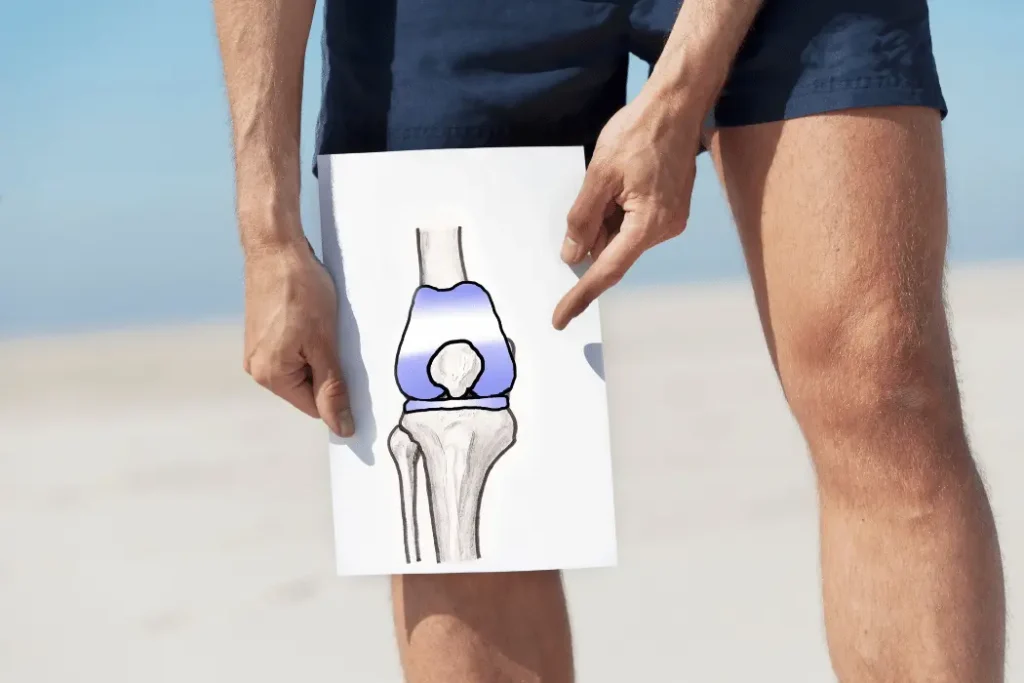Knee arthroplasty, another name for total replacement of knee surgery, is a major medical treatment used to improve function and relieve pain in patients with severe knee arthritis or injuries. Even though having surgery could be frightening, knowing what to anticipate before, during, and after the treatment can help patients feel less anxious and set themselves up for a more straightforward recuperation process. The following five factors are crucial to remember:
Preparing for Surgery:
To guarantee a satisfactory outcome, there are numerous essential actions to prepare for a total replacement of the knee. Patients usually get a thorough preoperative examination before the operation date. This evaluation may involve imaging scans, blood tests, and consultations with many healthcare providers. In addition, patients will be counseled to modify their lifestyle as needed, including giving up smoking, trimming down on extra weight, and doing exercises during physical therapy for the surrounding muscles. It’s also critical to adhere to any preoperative instructions given by the surgical team, such as those regarding medication schedules and fasting restrictions.
During Surgery:
To ensure comfort and pain management, patients are given general or regional anesthetic prior to the real total knee replacement process. The injured joint will subsequently be accessible through an incision made in the knee region by the surgical team. To restore the knee’s normal range of motion, an orthopedic doctor will use precise procedures to remove the damaged bone and cartilage before placing the prosthetic components. Modern surgical technology developments like computer-assisted navigation and less invasive procedures have greatly enhanced surgical accuracy and patient outcomes. To guarantee the patient’s health and safety throughout the surgery, the surgical team continuously checks vital signs and modifies the anesthetic dosage as necessary.

Postoperative Recovery:
After a complete knee replacement, patients are usually sent to a recovery center where they awaken from anesthesia under strict observation. Pain management measures, such as administering medication and cold treatment are started to reduce discomfort and promote prompt movement. Once out of the recovery center, patients are often sent back to their abodes with adequate information regarding postoperative care. Usually, patients seek the aid of professionals who offer after surgery home care Boise or similar services in other locations. Such experts can assist patients in recovering after surgery and restore flexibility, power, and range of movement in the injured knee by providing physical therapy. Patients learn precise exercises and strategies to progressively promote recovery and restore function under the supervision of a qualified physical therapist. In addition, patients who may need crutches, walkers, or canes to help with movement in the early phases of their rehabilitation may also seek the help of the above-mentioned professionals to fulfill household responsibilities and run any daily errands. NOTE: To monitor progress and address any issues, it’s critical to adhere strictly to the recommended rehabilitation plan and make all follow-up sessions with the surgical team.
Managing Expectations:
Although many patients find considerable pain relief and increased joint function after total knee replacement surgery, it’s important to limit expectations regarding the length of the recovery period and long-term results. Everybody recovers differently, and although some patients see improvements right away, others might need more time to get the best outcomes. During the healing process, obstacles and disappointments, including transient stiffness, edema, and pain, are common. A good recovery depends on a patient’s ability to overcome hurdles with resiliency and tenacity. These qualities include patience, perseverance, and an optimistic outlook. It’s also critical to keep reasonable expectations about the limits of a total replacement of the knee. The operation can significantly increase mobility and quality of life, but it could not totally cure all problems or return the knee to its pre-injury form. Maximizing results and reducing problems requires open contact with the surgery team and following postoperative instructions.
Also, read more about Protecting Your Joints in Style with Knee Pads
Long-Term Maintenance:
Prioritizing long-term care and upkeep of the restored knee joint is crucial as patients move through the healing phase and return to their regular activities. Regularly performing low-impact workouts, such as walking, cycling, and swimming, can support the maintenance of muscular strength, joint flexibility, and general cardiovascular health. In addition, it’s important to stay away from activities like high-impact sports and hard lifting that overstress the knee joint. The lifespan of the prosthetic joint can also be extended by using proper body mechanics and avoiding extended standing or kneeling.
Conclusion:
Patients with crippling knee pain and dysfunction might greatly enhance their quality of life with total knee replacement surgery, a life-changing treatment. Patients who are aware of what to anticipate prior to, during, and following surgery can approach the procedure with confidence and set themselves up for a speedy and full recovery. Every stage of the entire knee replacement experience, from preoperative planning to long-term maintenance, offers different difficulties and chances for development. Patients may improve their rehabilitation outcomes and lead pain-free, active lives for decades to come by actively engaging in the process, setting realistic goals, and emphasizing self-care.



